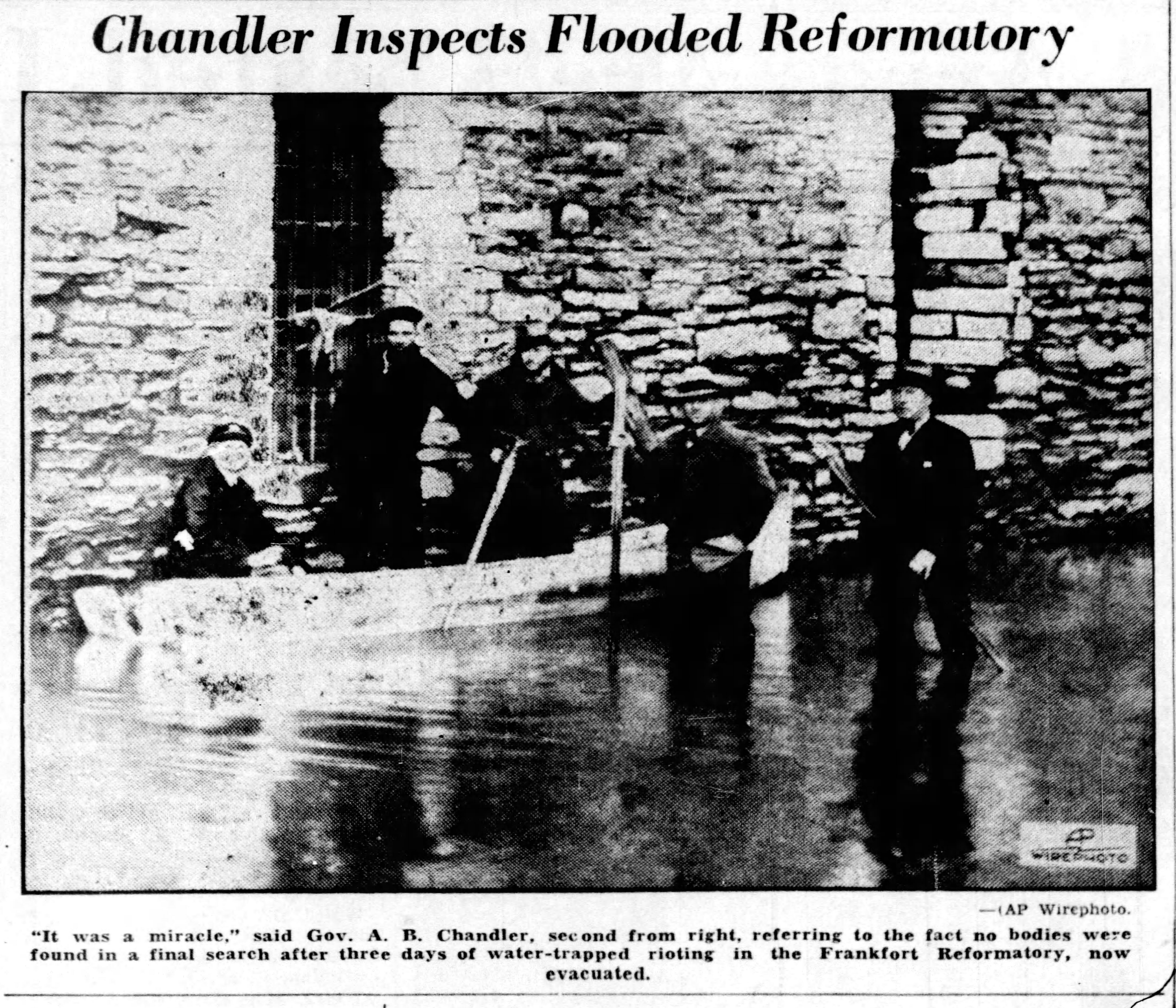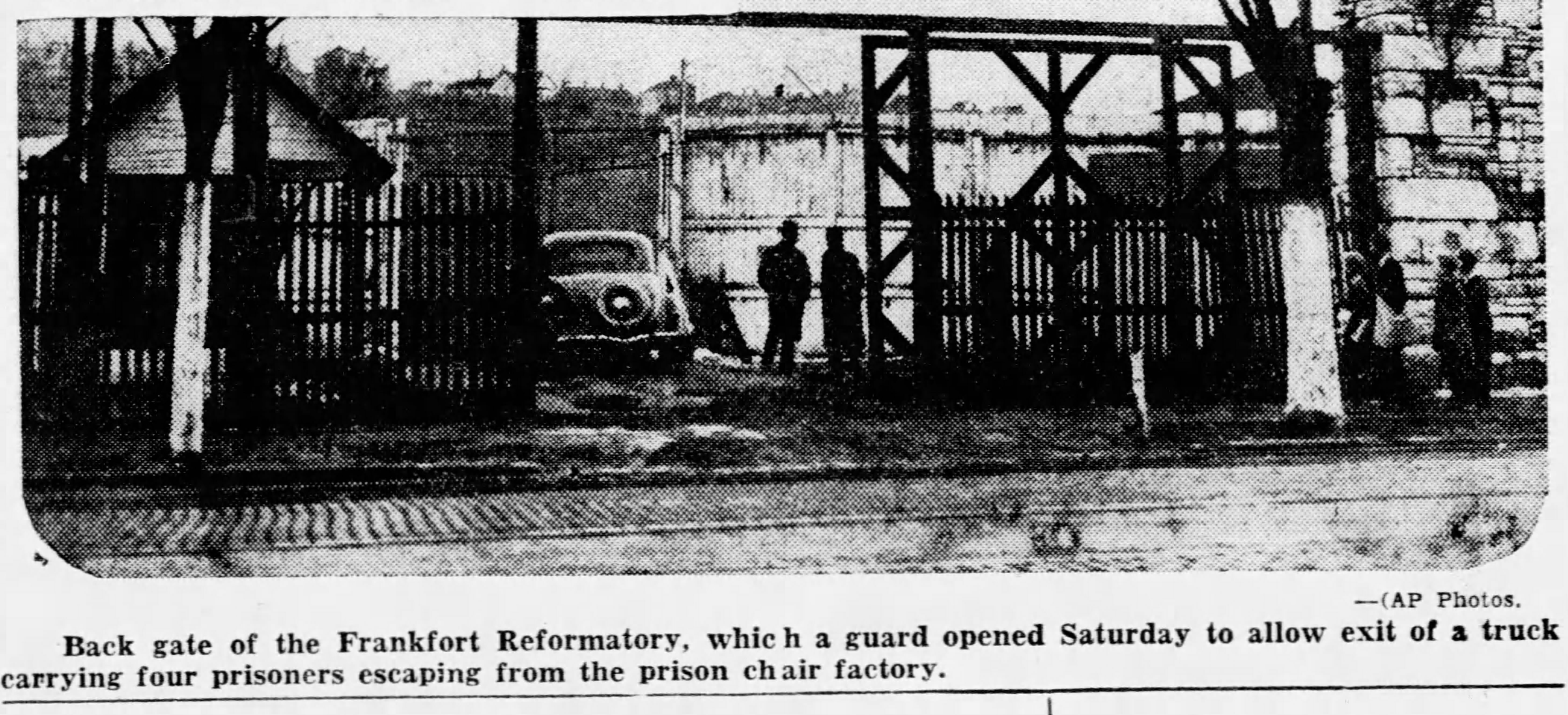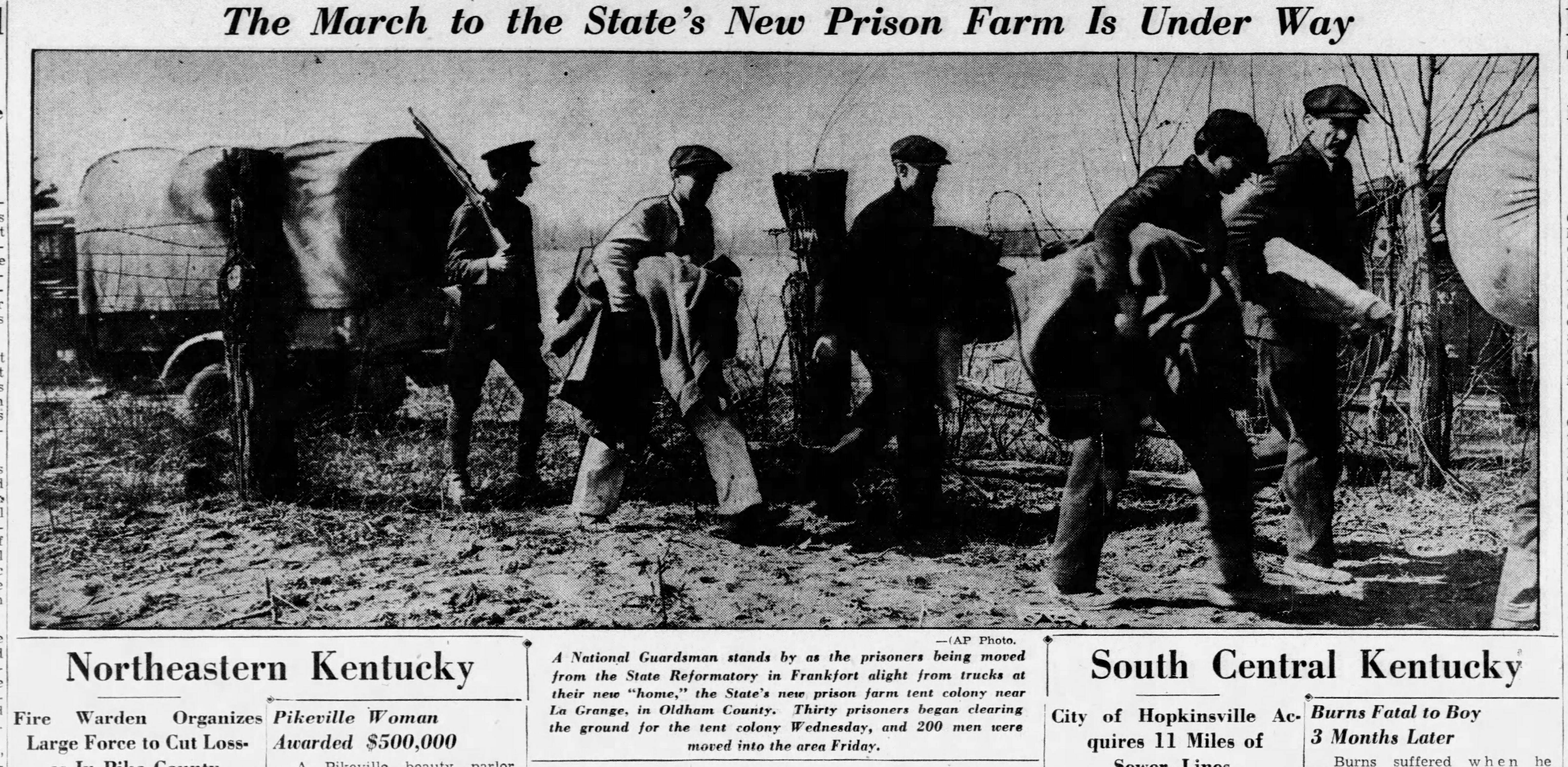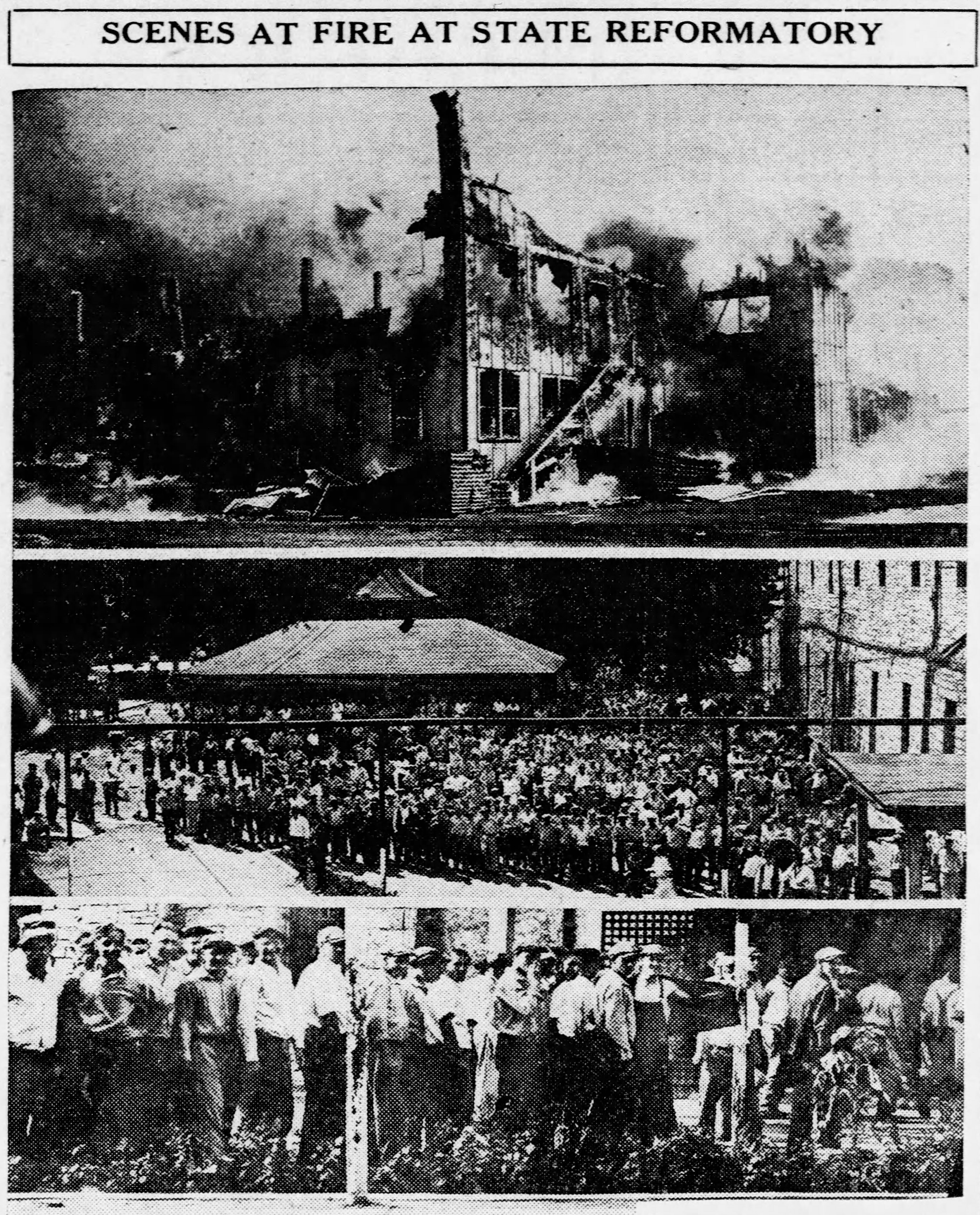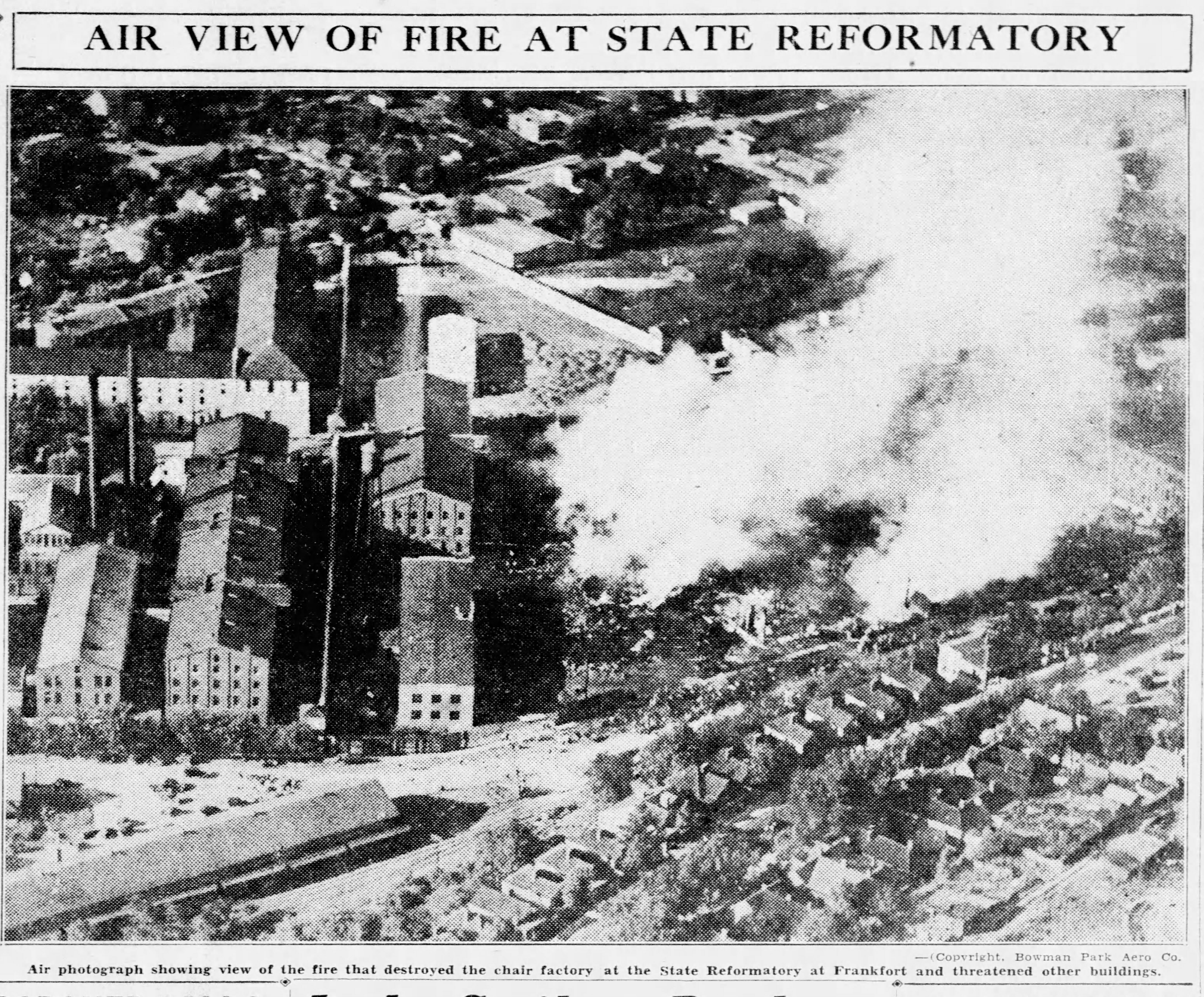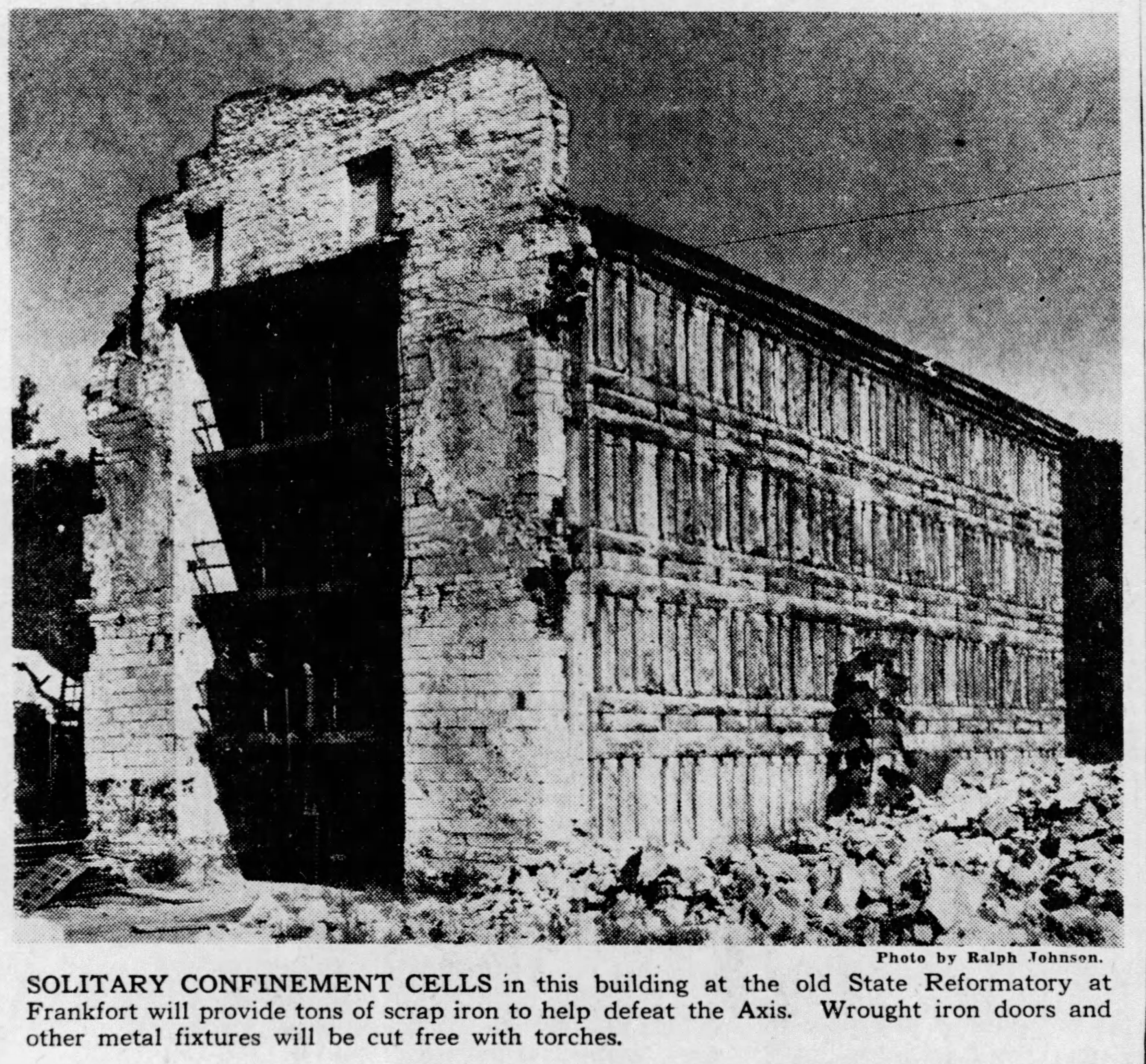History
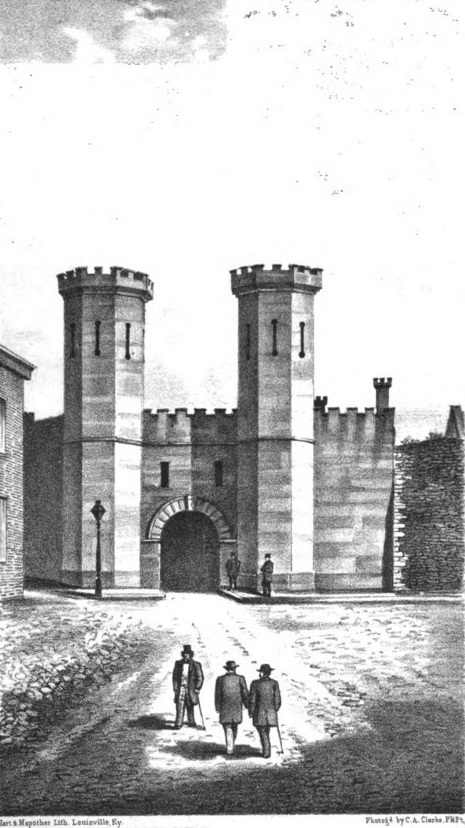
Built in the late 1700s, the Kentucky State Penitentiary was Kentucky’s very first attempt at a large-scale prison facility. Approximately 80 years after Kentucky State Penitentiary in Frankfort was built, a branch penitentiary was built in Eddyville, Kentucky. In the early 1900s, the facility in Frankfort was renamed the Kentucky State Reformatory while the branch facility became the only state penitentiary. The original facility housed more than 600 inmates and would later nearly double its size in the late 1800s and yet again during the 1900s. Out of the three separate dormitory facilities, two of these buildings were reserved for white inmates and the third houses black inmates. Interestingly, the Frankfort facility also housed female inmates in a separate facility on the campus.
As with many institutions, overcrowding soon became an issue. By the early 1900s the ratio of guards to inmates was 1:23.5. The guards worked every day of the week at least 8 hours per day. Inmates were used for labor for various projects including a furniture, shoe, broom, and clothing company. Excessive punishment allegations were made on a regular basis with some claiming disciplinary of unruly inmates as being “barbaric.”
By the Mid-1930s, a flood destroyed much of the original prison. Governor A. B. “Happy” Chandler went on to request a new facility be built for an entirely new facility located in LaGrange, Kentucky. By 1939 the Kentucky State Reformatory at LaGrange opened.
Life Inside the Prison
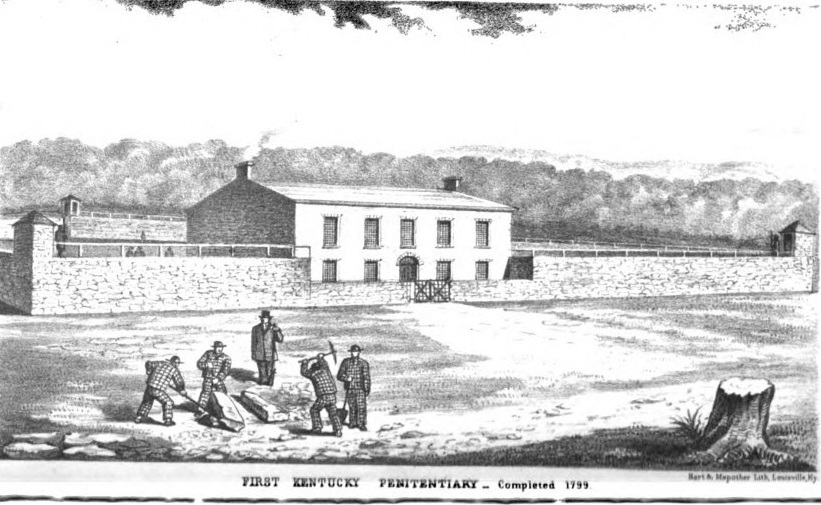
On 19 December 1799, the Kentucky Legislature passed a joint resolution allowing the sheriff of Franklin County to use the penitentiary for confining prisoners. Additionally, the Legislature passed an act giving Richard Taylor additional time to build walls around the penitentiary. The amount of cash for building the penitentiary was three thousand and fifty-eight pounds and eighteen shillings and up until the aforementioned date, seventeen hundred and seventy-three pounds, seventeen shillings, and eleven pence was paid for criminal prosecutions. An additional $4,333 was appropriated to complete the penitentiary. The buildings were completed and ready to be used by the year 1800.
The Kentucky Legislature appointed six inspectors, James Blair, Richard Apperson, Nathaniel Richardson, Thos. Love, William Payne, and Daniel Weisiger. Inspectors established wearing apparel for convicts: in the summer season, country linen for the shirts, overalls, and hunting shirts; the linen to be checked with deep yellow, the diamonds on inch square; the hunting shirts to reach below the hips. In the winter, suits of country linsey, same make and figure, with an under jack-coat, shoes and socks, a hat made of leather, with a flat crown, and a brim about three inches wide. The apparel for females was to be made of the same materials made into petticoats and jack-coats.
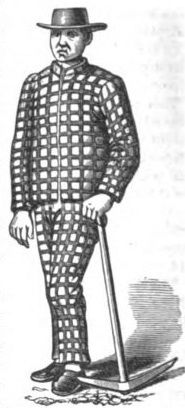
The convicts shall receive necessary clothing, uniform in colors and receive on the first day of May annually, two pair of linen overalls, pants, two shirts, and one hunting shirt of brown country linen; on the first day of November, annually, two pair of linsey overalls, two linsey hunting shirts, one linsey waistcoat, and a linen shirt of a brown color; also, two pair of woolen socks, two pair of shoes, and a partly-colored cloth cap. The women shall receive, on the first day of May, annually, two shifts, two petticoats, two short gowns, and one bonnet of brown country linen, and one pair of shoes; and on the first day of November, annually, two petticoats, two short gowns of linsey, two pair woolen stockings, and one pair shoes. The women shall wear the dress hereby described for them. The clothes in which they may be committed shall be fumigated, aired, and laid by, to be returned to them at their discharge.
Convicts were to be furnished with suitable bedding of coarse, country tow linen for a bed-tick, filled with chaff or straw; two woolen blankets, and a bunk, which is to be erected in each lodging room. Convicts will change their linen once a week; shall bathe when directed by the keeper; daily wash their faces and hands before breakfast, necessary towels being kept for them to wipe with. The heads and beards of the men convicts shall be closely shaven, on every Saturday evening, by the said convicts, in rotations. On every Saturday, the convicts shall wash and iron their clothes; and likewise their blankets on the first Moneys in January, April, July, and October.
- The floors of the rooms shall be swept daily and washed on every Saturday.
- The walls will be whitewashed on the last Saturday in April and October, by one or more of the convicts, in rotation, who shall have an extra allowance of diet on the days they perform such washing and whitewashing. The yard shall be kept free from cattle and other stock.
- The physician shall keep a register of the sick, their disorders, and his prescriptions and lay the same, with his charges, before the inspectors in the months of April and October.
Rules and Regulations
The dieting of the convicts is as follows: On Tuesdays and Saturdays, they shall be allowed meat and bread; on other days of the week, bread, soup, vegetables, and milk, when the season will permit.
- No person shall buy, sell, or barter any articles in the penitentiary with a convict. Any person who introduces into or gives away, or barters or sells within the penitentiary, any spirituous liquors (except where expressly allowed by law) shall be forever prohibited from visiting any convict, until the sentence be revoked by the board of inspectors, and shall forfeit the sum of $20.
- Males and females shall eat, and be kept, in separate apartments; and shall have no intercourse or communication with each other. Every male convict shall lodge alone; and shall work alone, unless the nature of their employment shall require otherwise.
- During the night, lamps shall be kept burning in the galleries, when the keeper shall deem it necessary.
- Labor commences at sunrise and ends at sunset; provided, however, that an interval of half an hour shall be allowed for breakfast, and one hour for dinner; and that they shall not labor more than eight hours in a day in the months of November, December, and January; nine hours in the months of February and October, and ten hours in the rest of the year.
- Prisoners are permitted to walk and air themselves in the yard, at such times as the keeper shall permit, and in the presence of himself or one of his deputies. No games of chance are permitted, nor shall any other sports be used, but with the express permission of the keeper. Convicts are encouraged to employ any leisure time in reading; donations of books will be thankfully received; and the keeper shall take care of them, and procure a list, with the names of the donors.
- On every Sunday in the morning and in the evening, shall be read to convicts, assembled for that purpose, some plain, practical, and instructive discourse. The acting inspector, or the keeper, or someone of the convicts selected by him, shall be reader.
- If any person be guilty of fraud of theft, or any assault, quarrel, or abusive words, or of cursing or swearing, or of indecent conversation or behavior, or of idleness or negligence in work, or of willful mismanagement or waste, or of insolence to the keeper, his deputies, or any inspector, or disobedience to any of the preceding regulations, he shall be immediately confined in one of the cells destined for the refractors; and shall continue there for so long a time as the board of inspectors, or, in case they should not assemble, the acting inspector shall deem necessary.
- Any person who shall attempt to escape, shall immediately be put in irons; shall be confined in one of the cells for so long a time as the board of inspectors, or the acting inspector, shall deem necessary; and shall afterwards be kept entirely apart from the others, until the board shall determine otherwise.
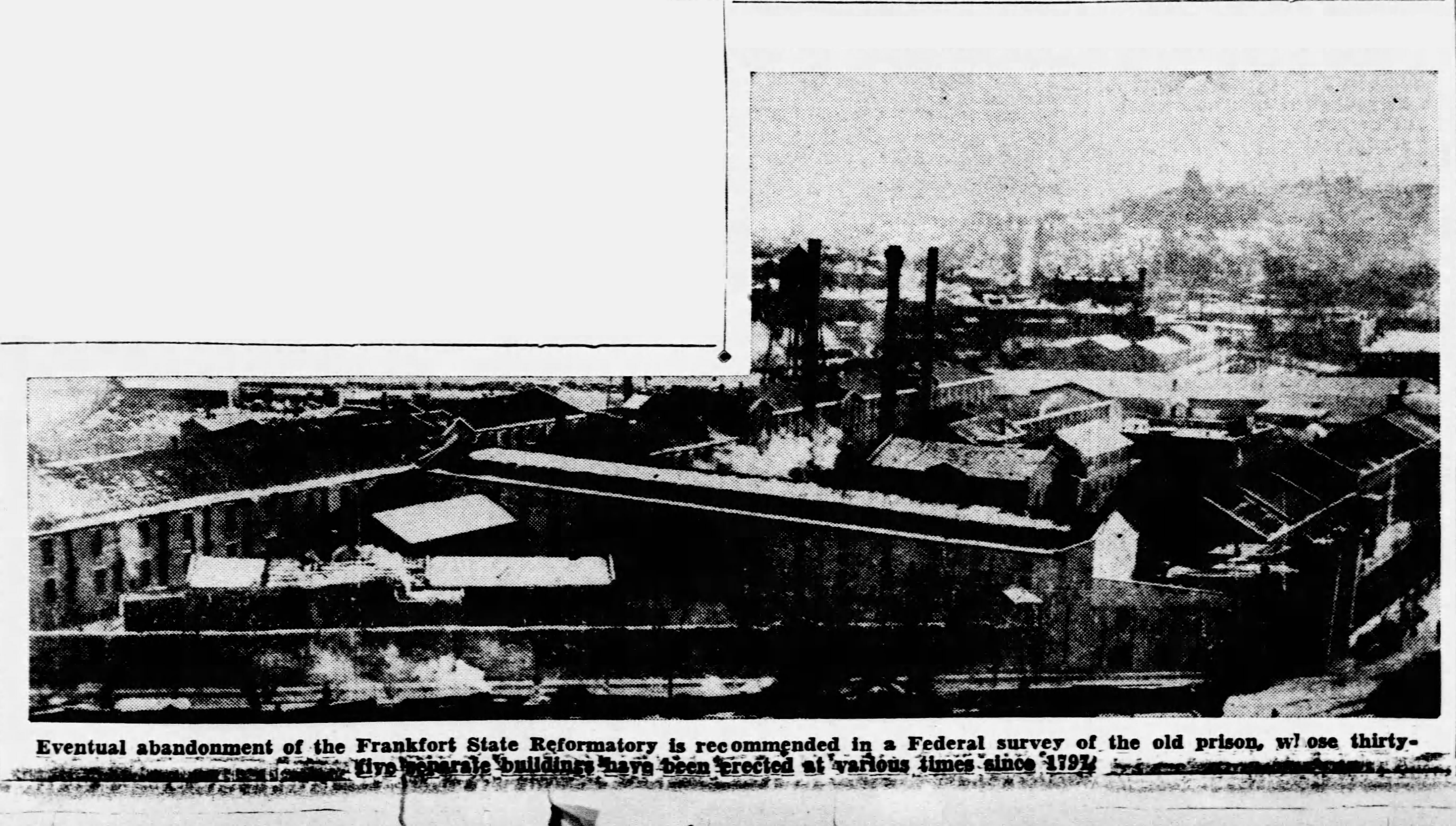
Kentucky State Reformatory at La Grange
History
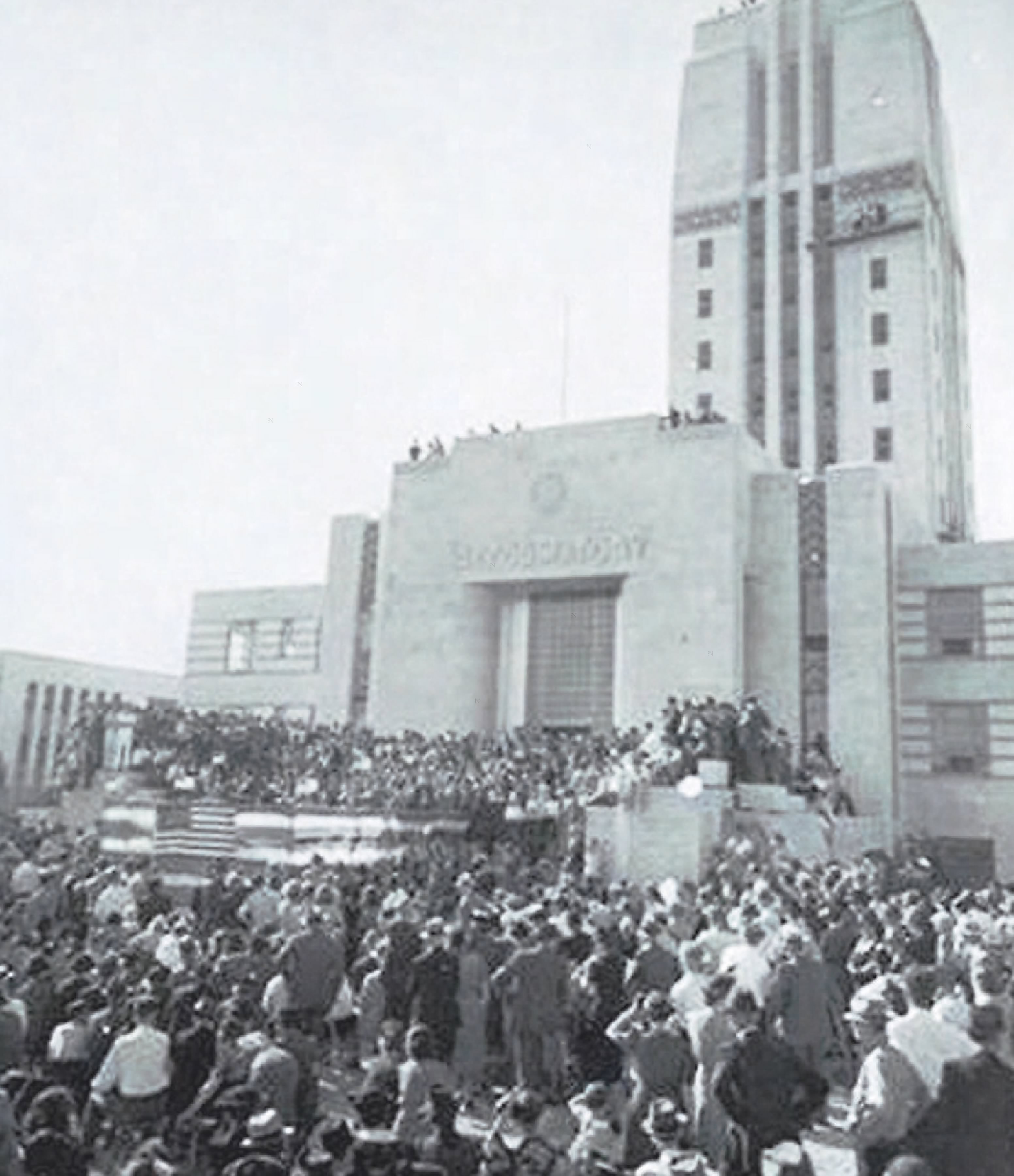
Officially dedicated on 9 October 1939, the new Kentucky State Reformatory, Located in La Grange, Kentucky, was intended to change the practices of how Kentucky housed its prisoners. As a medium security facility, the overall architecture, style, and design were partially the result of then governor A. B. “Happy” Chandler. Governor Chandler toured various prisons across the United States in order to develop a prison that was humane and innovative with a focus on rehabilitation. Governor Chandler secured over one million dollars from the Kentucky legislature and that was matched by president Franklin D. Roosevelt’s Works Progress Administration (WPA) totaling nearly three million dollars. The new Kentucky State Reformatory was able to house 3,000 inmates.
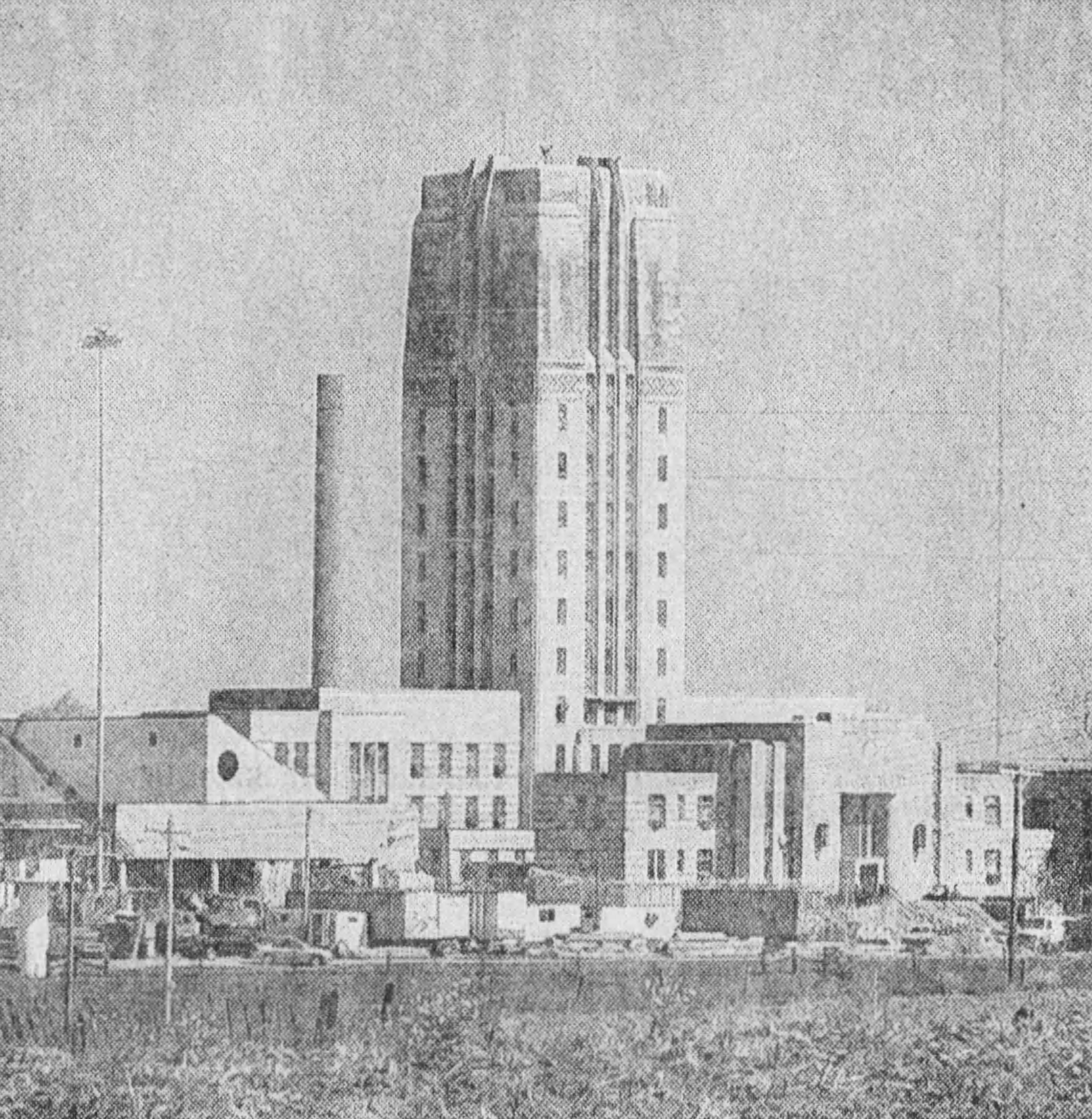
The new Kentucky State Reformatory was built with an open plan whereas inmates were placed together in large dormitories rather than single rooms. As with many of Kentucky’s other institutions, inmates grew their own food on a sprawling farm complex in order to maintain sustainability and cut down on food costs.
Today, Kentucky State Reformatory still stands with a 12-story administration building that houses administrative offices, a hospital, and living quarters for staff. Additionally, there are 12 dormitories to house inmates, a psychiatric treatment unit, and, until 1995, a skilled nursing facility. The prison also has its own ambulance service. Other buildings include a dining facility, chapel, vocational school, visitation services building, and a mental health building. Over time, the jail went from an “open floor” plan back to individual rooms.
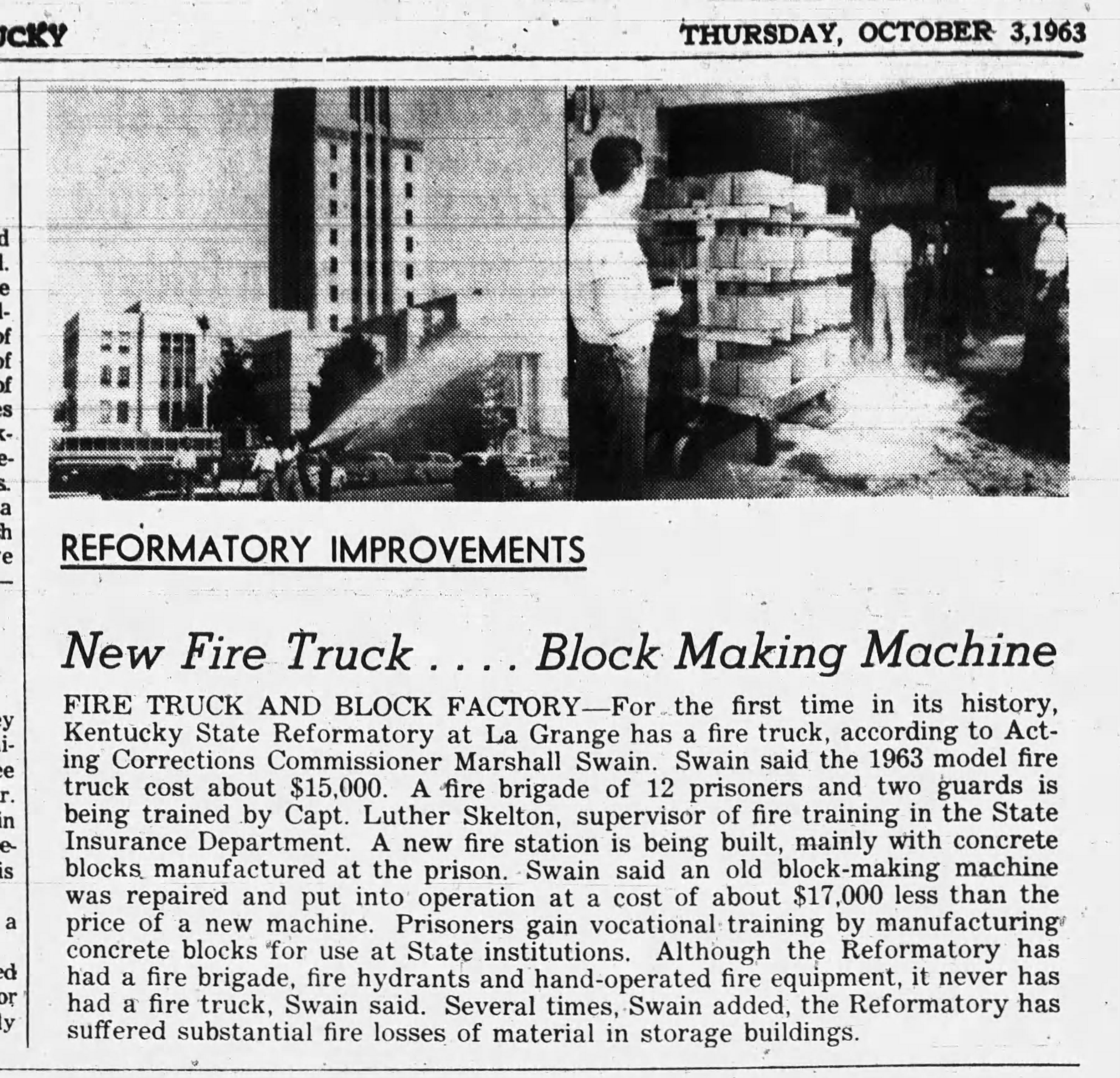
Contributed by Phil Tkacz & Shawn Logan | contact@kyhi.org
⁘ Works Cited ⁘
- Commonwealth of Kentucky Department of Corrections. (n.d.). Retrieved from https://corrections.ky.gov/Facilities/AI/ksr/Pages/default.aspx
- Sneed, W. C. (1860). A report on the history and mode of management of the Kentucky Penitentiary from its origin, in 1798, to March 1, 1860. Frankfort, Ky.: Senate of Kentucky.
Important note:
If you would like to use any information on this website (including text, bios, photos and any other information) we encourage you to contact us. We do not own all of the materials on this website/blog. Many of these materials are courtesy of other sources and the original copyright holders retain all applicable rights under the law. Please remember that information contained on this site, authored/owned by KHI, is provided under a Creative Commons Attribution-NonCommercial-NoDerivatives 4.0 International License.
Photographs, text, illustrations and all other media not authored by KHI belong to their respective authors/owners/copyright holders and are used here for educational purposes only under Title 17 U.S. Code § 107.



